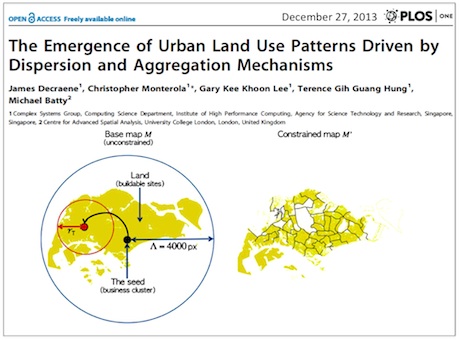In our collaboration with the Complexity Group at Singapore’s Agency for Science, Technology and Research (A*STAR), we are involved in various simulations of development in Singapore. James Decraene, Chris Monterola, Gary Lee, Terence Hung, and myself have built a simple model of urban development based on dispersion and aggregation mechanisms which has similarities to the DLA approach that Paul Longley and myself we used many years ago for simulating cities. In this paper which you can freely download – a triumph for Open Access and good funding – from PLoS One which was published on December 27th 2013, you can find the mechanisms we use and also its application to several other developed cities whose data we can easily download now from various sources. We stand at a threshold where we can now develop many different types of models for many different types of cities because of the techniques such as GIS and scripting languages that we now have and the fact that much data is now open to general usage. This approach whereby we build several models for many places is something that we hope to do this coming year (2014) in CASA where we will explore these possibilities for many UK cities using more aggregate models such as SIMULACRA. We also published a paper on this model in Environment and Planning B this month and you can access it here.
Modelling Singapore
This entry was posted in Cellular Automata, Complexity, Emergence, Fractals, Urban Models. Bookmark the permalink.









